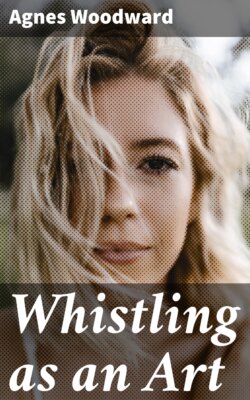Читать книгу Whistling as an Art - Agnes Woodward - Страница 4
FOREWORD
————
ОглавлениеAt one time whistling was considered unattractive and even unbecoming in a young woman. Of late years, however, concurrent with the progress and advancement of art, the potentialities of the human whistle have become most apparent. Today the professional whistler, particularly one possessing the gift of bird imitations, is much in demand for concerts and similar entertainments.
Bird songs, it is prophesied, may become the basic themes for far more music than folk songs. This, at least, is the prediction of Mrs. H. H. A. Beach, well-known composer, who has been making experiments along this line in the MacDowell Woods in New Hampshire. “My studio at Peterboro was surrounded on three sides by beautiful birch trees, the front facing a wide view of valley and mountains. In the deep woods near by, the hermit thrushes sang all day long, so close to me that I could notate their songs and even amuse myself by imitating them on the piano and having them answer. The songs were so lovely and so consonant with our scales that I could weave them into piano pieces as easily as I could have used folk songs. It was a labor of love indeed and I only hope that I have succeeded in giving at least a slight impression of their exquisite rhythm and melodic beauty.”
If bird songs may be successfully incorporated into piano music and whistling (and in the latter case the exact reproduction is not only possible, but is accomplished with absolute accuracy) then there is an infinite field of beauty and variety from which such themes may be drawn.
————
The foremost essentials of a good whistler are: pleasing tone quality, flexibility of tongue, adequate range (at least two octaves or more), correct breath control, and bird imitations with an intelligent understanding of their use. Personality is also an important factor in the making of a successful public whistler. Add to these qualities the necessary finish and the proper interpretation and presentation of a whistling selection, and the whistler at once receives merited recognition.
During the fifteen years of my experience as a teacher, I have learned that the bird notes are as easily acquired in the beginning lessons of the study as later, and for this reason, many of the bird notes and figures are given in the first five lessons. Some few changes may be necessary to suit the needs of certain pupils, but in the main, the lessons should be followed as outlined in the book.
It should be borne in mind, however, that this system is primarily intended for pucker whistling, although many of the figures and exercises may be employed by “tongue and teeth whistlers” and various bird imitators.
AGNES WOODWARD.
